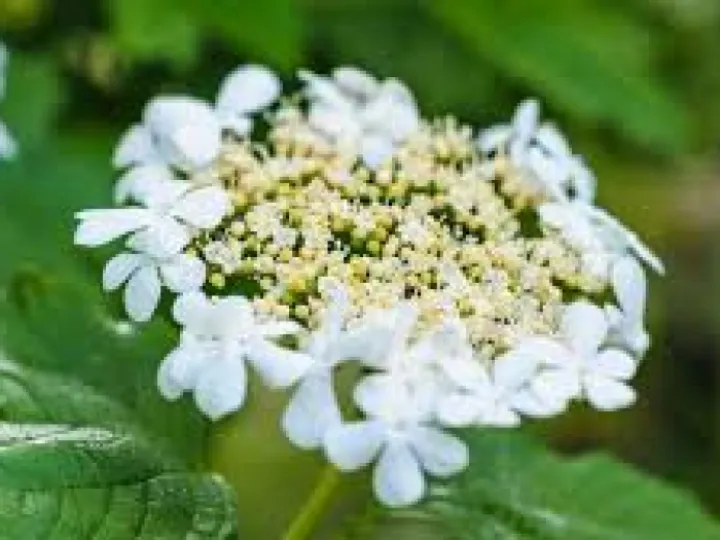Tarvin Community Woodland – Guelder Rose
Guelder Rose (Viburnum opulus)
To begin with the bad news – the Guelder Rose isn't a rose at all, but one of the enormous family of Viburnums. Also known as the snowball tree, dogberry, water elder, cramp bark or European cranberry bush, it is one of Britain's most attractive native shrubs. The most common name 'guelder rose' relates to the Dutch province of Gelderland, where the development of the popular cultivar, the snowball tree, supposedly originated. With flowers that supply a great deal of nectar and berries that provide food for a huge range of birds, Guelder Rose is excellent for wildlife and it also provides a through-the-year display for humans:- its showy leaves which develop a good autumn colour, large heads of white flowers and huge bunches of glistening red berries together provide interest across the seasons.
While we have planted it deliberately in our woodland, the Guelder-rose is naturally found in a range of habitats; woods, woodland edges, hedgerows, grassland scrub, wetlands and riversides. Such is its merit amongst large-scale plantings that it is frequently found along roadsides or in gardens and parks. Indeed, Trustees did debate whether planting it in our woodland might make the woodland seem more like a park but the value of this native tree to our wildlife won through – and the increased amenity that it provides for humans is just a useful by-product!
The flowers of the Guelder Rose are flat lace-cap flowers in white (or sometimes pale pink), each about 3cm across, borne in May or June. The centre of the flower is composed of small tubular fertile flowers, which are then all-encircled by a ring of larger, sterile, flowers. Following pollination by the myriad of insects attracted by the plentiful nectar, the fertile flowers mature into large clusters of shining translucent red berries, that are subsequently eaten (and the seeds dispersed) by a wide variety of birds.
The fruit is edible in small quantities (although it has a very acidic taste) and it can be used to make a jelly. However, because it is mildly toxic, eating it in large amounts may cause vomiting or diarrhoea. The name cramp bark is related to the ability of chemicals in the bark to reduce smooth muscle tightness. In particular, the term cramp bark relates to the relieving of this type of muscle tightness during women's menstrual (period) cramps. However, it would appear that it can also be used during pregnancy for cramps or, more generally, for pain and general muscle cramping.
Quick Links
Get In Touch
TarvinOnline is powered by our active community.
Please send us your news and views.









